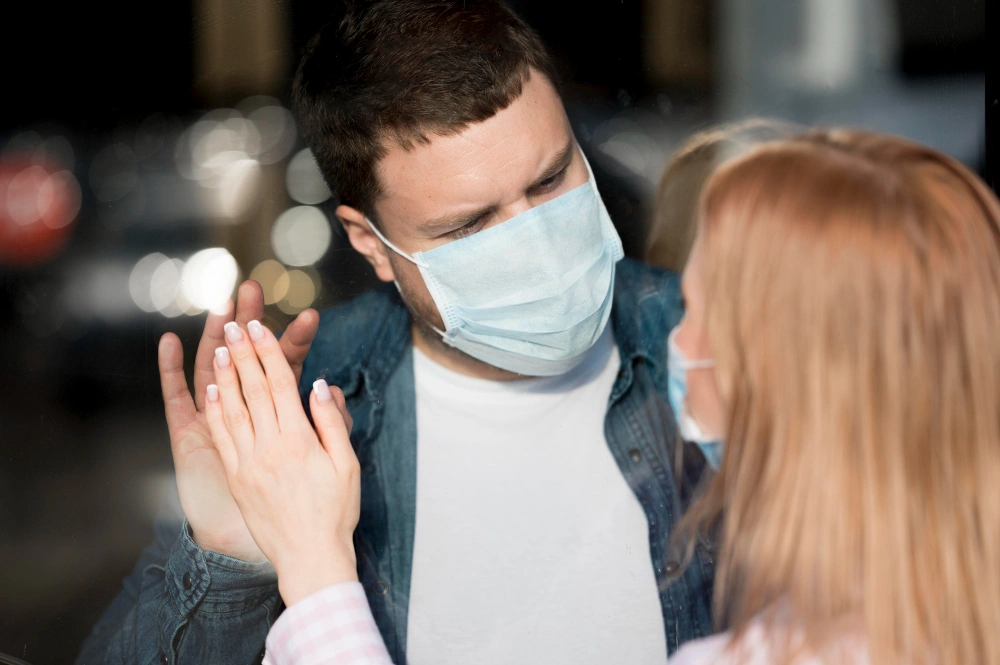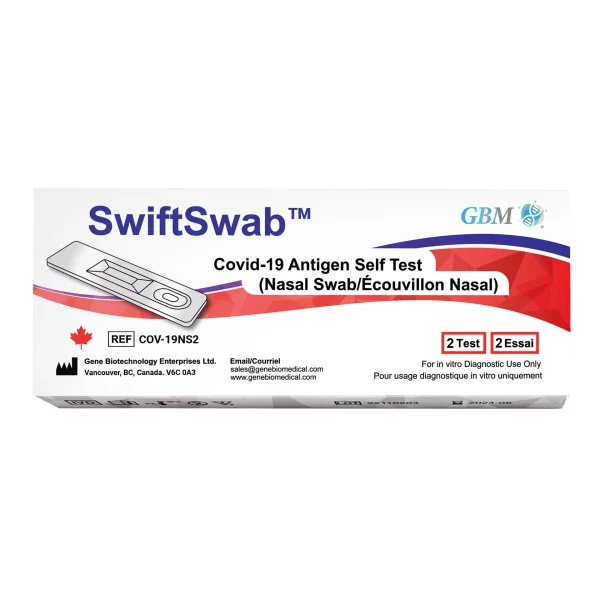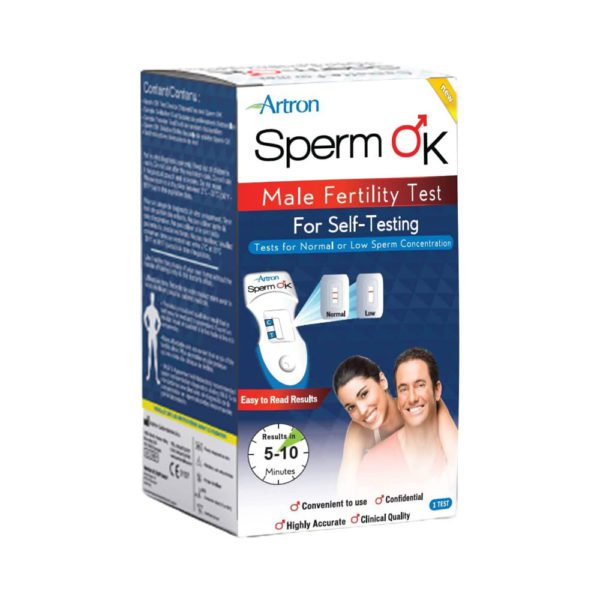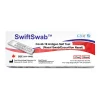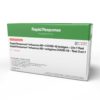Getting the flu from touching something as mundane as a shopping cart handle might sound dramatic.
But it’s not that far from reality.
Transmitting the flu through touch
Flu hand transmission happens when the influenza virus lingers on surfaces and finds its way into your body through contact with your hands.
Here’s how it works: the flu virus can survive on surfaces like doorknobs, smartphones, countertops, or even that innocent-looking office coffee pot. Depending on the material, it can thrive for hours, waiting for you to touch it.
| Material | Survival Time of Flu Virus |
| Had, non-porous surfaces (e.g. doorknobs, countertops) | 24-48 hours |
| Soft porous surfaces (e.g. fabric tissues, paper) | 8-12 hours |
| Skin (e.g. hands) | 5 minutes |
| Stainless steel and plastic | 2 days in optimal conditions |
| Glass surfaces (e.g. phone screens) | 48 hours |
These times may vary depending on factors like temperature and humidity. Colder and drier environments often allow the flu virus to survive longer, which is why flu season typically peaks in the winter.
When you unknowingly pick up the virus, it sneaks into your respiratory system, especially if you touch these common entry points:
- Eyes
- Nose
- Mouth
This process is one of the most common ways the flu spreads, alongside droplets from sneezes or coughs.
Not everything you touch will make you sick, as not all surfaces carry the flu virus. However, since you can’t see the virus, it’s crucial to stay vigilant and practice basic hygiene to avoid unknowingly spreading it.
How does hand hygiene prevent flu transmission?
Hand hygiene is one of the simplest yet most effective ways to prevent the transmission of the flu and other infectious diseases. Regular handwashing removes or kills flu virus pathogens, reducing the likelihood of infection.
- 1.Wash with soap. Soap is a powerful tool against flu viruses because it contains molecules called surfactants. It breaks apart the outer layer of the flu virus, which is made of fat. Once the layer is gone, the virus can’t survive.
- Wash for at least 20 seconds. This gives you enough time to cover all parts of your hands with soap and scrub away germs. It also makes sure you clean spots you might miss, like under your nails or between your fingers.
- Use a sanitizer with 60% alcohol. If soap isn’t around, hand sanitizer is the next best thing, particularly those with 60% alcohol content. It works by breaking down the virus’s outer layer, just like soap. Lower concentrations don’t work as well, while higher ones evaporate too quickly to fully kill the virus.
- Dry your hands. Wet hands can pick up more germs than dry one. See to it that your hands are completely dry after washing.
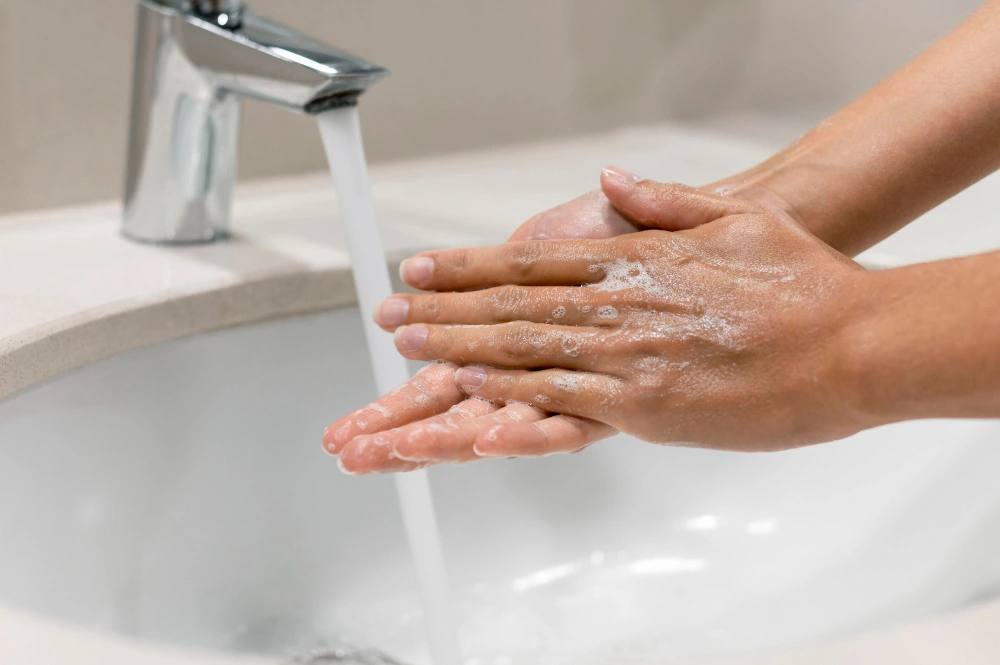
When does hand hygiene matter?
You don’t need to wash your hands obsessively every time we touch something. Instead, focus on key situations where handwashing is especially important to prevent the spread of germs.
Here’s when to be diligent:
- Before eating. Always wash your hands before meals to avoid transferring germs from your hands to your food, and ultimately into your body.
- After using the restroom. Toilets can harbor harmful bacteria and viruses, so handwashing prevents these germs from spreading to others or contaminating surfaces.
- After coughing, sneezing, or blowing your nose. Respiratory droplets can spread viruses like the flu. Cleaning your hands after these actions keeps germs from lingering on your skin.
- After touching public surfaces. High-touch areas like doorknobs, handrails, and elevator buttons are hotspots for germs. Washing your hands afterward minimizes the risk of picking up or spreading pathogens.
- Before and after caring for someone sick. Whether helping with a cold or cleaning up after someone, handwashing protects both you and the person you’re caring for from cross-contamination.
What are common misconceptions about how flu is transmitted?
A common myth is that the flu is only spread through coughs and sneezes. Another belief is that hand hygiene alone can keep the flu at bay since this forsakes the importance of vaccines and avoiding close contact with sick people.
To stay truly protected, it’s key to combine the following:
- Handwashing
- Vaccination
- Keeping distance from the sick
Frequently asked questions
How is the flu transmitted through hands?
The flu virus can be transmitted through hands when an individual touches surfaces or objects contaminated with the virus and then touches their mouth, nose, or eyes.
Can handwashing reduce flu transmission?
Yes, regular and thorough handwashing with soap and water can significantly reduce the transmission of the flu virus by removing viruses from the skin’s surface before they can enter the body or contaminate surfaces.
What is the importance of hand sanitizer in preventing flu?
Hand sanitizers containing at least 60% alcohol can inactivate flu viruses on hands, offering a convenient alternative for disinfection when soap and water are not readily available.
How long can flu viruses survive on hands?
Flu viruses can survive on the skin for 2 to 8 hours. Frequent handwashing or the use of hand sanitizer can effectively reduce this risk of transmission.
What is the best way to wash hands to prevent flu transmission?
The best way to wash hands is by lathering with soap and scrubbing all surfaces of the hands, including between fingers and under nails, for at least 20 seconds, followed by thorough rinsing and drying.
Key takeaway
Knowing that you can get the flu by touching contaminated surfaces, proper hand hygiene is a simple and effective way to prevent infection. There’s no need to panic or scrub every minute of the day, but a little handwashing goes a long way in keeping germs at bay.
If you’re feeling under the weather, check out our shop for accurate and convenient antigen tests to quickly find out if it’s the flu or something else.
Sources
[1] https://www.thecanadianencyclopedia.ca/en/article/h1n1-flu-of-2009-in-canada
